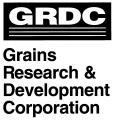Active
This project will examine the diversity and biology of tomato-infecting geminiviruses from Australia and south-east Asia. In addition, novel strategies for the multiplexed, hierarchical detection and diagnosis of plant viruses will be developed for the improvement of plant virus incursion detection and management capacities.
What is the biosecurity problem?
Tomato leaf curl disease, caused by a complex of geminivirus species in the genus Begomovirus, is widely regarded as the most significant constraint to tomato production worldwide. Despite quarantine measures, a recent incursion of Tomato yellow leaf curl virus (TYLCV) was detected in south-east Queensland. TYLCV is now causing significant losses in tomato production in regions surrounding Brisbane and Bundaberg.
Given that the insect vector of TYLCV, the whitefly Bemisia tabaci, is present in Australia, this disease poses a huge risk for establishment and spread.
Improved virus detection and disease management strategies are needed to prevent the establishment and spread of TYLCV in Australia, and also to prevent further incursions of geminiviruses. New diagnostic strategies and technologies, focussed on hierarchical and multiplexed detection, could enable the simultaneous detection of endemic, exotic and newly occurring Geminivirus species that arise through recombination. More efficient diagnostics would greatly enhance disease surveillance and management capabilities.
The main outputs of this project are to:
- train an Australian post-graduate (PhD) student in plant virology and molecular diagnostics
- assess the recent incursion of Tomato yellow leaf curl virus in Australia
- assess the genetic diversity and biological features of geminiviruses from Australia and south-east Asia
- develop and validate diagnostic assays for a range of geminiviruses posing either a domestic or international quarantine threat, and
- evaluate a novel diagnostic platform, OptoPlexTM nanobeads, for the multiplexed hierarchical detection of plant viruses.
Who will be the end-users of this research?
- State and Territory Department of Primary Industries
- Australian Quarantine and Inspection Service
- Universities
- CSIRO, and
- Commercial diagnostic laboratories.
STUDENT
Ms Sharon Van Brunschot
Student CRC60070: Tomato Leaf Curl-Nano - PhD
Sharon.VanBrunschot@deedi.qld.gov.au
Read More
PROJECT DETAILS
Active
Supervisor
Dr Andrew Geering (QPI&F) and Dr Andre Drenth (University of Queensland)
Term
October 2007 – October 2010
LOCATION
The project aims to determine the potential risks associated with climate change for key wheat pathogens; wheat using stripe rust, crown rot and Barley yellow dwarf virus and its aphid vector. The research approach is three-fold:
- Modelling the effects of increasing temperature on the biology and distribution of pests and diseases and vectors e.g. the bird cherry oat aphid, Rhopalosiphum padi
- Collecting real-time data on host-pathogen/pest interactions from field experiments using wheat grown under elevated CO2, and
- Developing adaptation plans for government and industry based on the above data to mitigate any increased risks posed by climate change to biosecurity of wheat crops.
What is the biosecurity problem?
Climate change is clearly recognised as a major threat to agricultural systems. The expected increase in temperature, atmospheric CO2, heavy and unseasonal rains, increased humidity, drought and cyclones, are likely to affect crops, pests and diseases and host pathogen interactions. However, the extent to which climate change will affect emergency pests and pathogens and their hosts is not clearly understood. A review of the impacts of climate change on plant biosecurity (Aurambout et al. 2006) indicated a need to document pest and disease responses to climate change and incorporate them into our management and contingency planning. To respond to future climates, changes to industry practices and government policies may be required. This project will identify the potential risks associated with climate change and plant biosecurity. Adaptation plans will be developed around these risks to inform industry practice and policy.
The main outputs of this project are to:
- provide new knowledge on the effects of elevated atmospheric CO2 on key wheat diseases, and
- develop a series of tools to inform industry and government to enhance our contingency planning to include the influence of climate change on biosecurity
Who will be the end-users of this research?
- Biosecurity policy and decision makers e.g. BA, OCCPO, PHA, state biosecurity agencies,
- PHA - data and tools will enhance threat categorisation and industry biosecurity plans
- OCCPO - data and tools may be used in incursion responses
- Industry - to adjust management strategies and biosecurity plans and increase their level of preparedness for climate change

This is a screenshot output from the Asian citrus psyllid - citrus growth model using the IPPC A1Fi climate change scenario with a Google Earth application. The ground overlay represents daily spatial variation in the population of adult psyllids displayed sequentially in an animation of 365 frames for the year 1990. The graphics depict temporal variations in the population of the Asian citrus psyllid and increasing temperature for the years 1990, 2030 and 2070 for a specific location. A total of 11,330 graphics can be accessed in the interface (one graph for each 50 km, two-grid cell on which the model was run) providing Australian coverage can be accessed in the interface (one graph for each 50km two-grid cell on which the model was run) providing Australian coverage.
The CRCNPB would like to thank Asia-Pacific Network for Global Change Research for their contribution to this project.
PROJECT LEADER

Dr Jo Luck
Project Leader CRC10071: Climate Change
Jo.Luck@dpi.vic.gov.au
Phone: 03 9210 9222
Fax: 03 9800 3521
Read More
PROJECT DETAILS
Active
Term
July 2007 - June 2010
Budget
$2,108,201 (cash and in-kind support)
PROGRAM DETAILS
LOCATION
CORE CRC PARTICIPANTS
CONTRIBUTORS
INDUSTRY RELATED
The objective of this project is to produce an inventory of Australian Epiphyas species which, combined with host plant information and reliable identification tools for caterpillars (molecular) and adults (molecular and morphological), will expand our knowledge of the genus, address the concerns of our agricultural trading partners and remove the threat of unjustified quarantine measures.
What is the biosecurity problem?
Epiphyas is a large genus of Australian moths. The light-brown apple moth (Epiphyas postvittana) is a native pest that attacks various horticultural crops. The larvae of Epiphyas caryotis, E. liadelpha, E. pulla and E. xylodes are also known to feed on cultivars in a variety of plant families and are difficult to distinguish from their relative - the light-brown apple moth.
The main outputs of this project are to:
In addition to providing the tools for Epiphyas pest species identification, the revision will inform the management of Australia's biodiversity by providing a sound taxonomic base for all future research involving Australia's indigenous Epiphyas species and their native habitats.
Who will be the end-users of this research?
Agricultural Departments, Quarantine Services, Lepidopterists, Ecologists and other managers of Australia's biodiversity and plant biosecurity.

(Left & middle) ~ Brindabella woodland (ACT); Epiphyas caryotis (male).
(Right top & bottom) ~ molecular + morphological identification tools.
STUDENT
PROJECT DETAILS
Active
Supervisor
Dr. Marianne Horak (CSIRO Entomology / ANIC), Dr. Andrew Mitchell (DPI NSW), Prof. Mike Crisp and Dr. John Trueman (ANU)
Supervising Institution
Australian National University
Term
July 2007- June 2010
LOCATION
This project is developing a mix of digital technologies designed to provide the building blocks of future diagnostic information systems. The Plant Biosecurity Toolbox™ and the Biosecurity Bank are web-based tools which provide users with specific diagnostic information to assist them identify the plant pest or disease. The Plant Biosecurity Toolbox™ can be accessed through PaDIL* and hopefully in the future users will also be able to access the Biosecurity Bank through this portal.
In addition, a Remote Microscope Network allows species experts to view and identify specimens in real time via a microscope and internet connection. This tool facilitates access to experts both nationally and internationally to support fast and inexpensive diagnostics. Current nodes of the network include most states of Australia, New Zealand, Indonesia and some south-east Asian countries.
What is the biosecurity problem?
The frenetic increase in the pace of people movement and international trade puts added pressures on our borders and a greater need to quickly identify potential harmful pests and diseases. Through retirement of skilled diagnosticians and a low-level of uptake to study these disciplines, we are seeing a decline in our human capital. It is essential that alternative strategies are developed to support quick and accurate diagnostics in an increasingly resource poor environment.
The main outputs of this project are to:
- develop a standard diagnostic information template in collaboration with staff involved in plant biosecurity diagnostics
- audit diagnostic information relating to harmful pest and diseases to populate the template and identify gaps in diagnostic information, and
- provide a web-based portal to access diagnostic information.
Who will be the end-users of this research?
Users will range from inspectors in our ports and borders to field-based crop protection officers, to taxonomists and experts in labs. This may include farmers, consultants, policy makers, regulators or just simply members of the public. Users may be national or international. These tools engage a wide audience and provide information at a number levels – from taxonomy and general biology to risk analysis and detailed molecular tests.
What this means for future diagnostics
Viewed independently, the tools present the user with a simple pathway to solve a diagnostic problem and in so doing, perform the useful biosecurity function of pest identification. Wider access and use of the tools will be enhanced through the application of better digital technologies, such as personal digital assistants, wireless networks, portable remote microscopes, dedicated web portals and organised networks of facilities with agreed standards and processes.
Beyond this primary function, people interact with the tools to create an instantaneous log of pest specimens, their prevalence and locations which can then be picked up by analytical databases such as the Atlas of Living Australia that will aggregate and draw on these tools and data to provide a deeper understanding of trends. In this sense, these tools provide the materials for future heuristic models of analysis.
*PaDIL is a partnership between the Department of Agriculture, Fisheries and Forestry, Department of Agriculture and Food Western Australia, Plant Health Australia, Museum Victoria, Queensland University of Technology and the Cooperative Research Centre for National Plant Biosecurity.
PROJECT LEADER
Dr Gary Kong
Project Leader CRC27012: National Diagnostic Database
Gary.Kong@deedi.qld.gov.au
Read More
PROJECT DETAILS
Active
Term
January 2007 – December 2011
Budget
$1,013,428 (cash and in-kind support)
PROGRAM DETAILS
LOCATION
CORE CRC PARTICIPANTS
CONTRIBUTORS
The comparison of quarantine risk analysis systems project will initially gather and collate information from Australia, Canada, New Zealand, Japan, USA, UK, Chile and Thailand. This helps develop a methodology to analyse the biosecurity risks more effectively, and provide a higher level of confidence to Australia's quarantine risk assessment system.
What is the biosecurity problem?
Currently there is no information on how efficient the Australian import risk assessment system is compared to other risk assessments conducted around the world. Biosecurity Australia needs to know more on this to put confidence in its system. The current system depends on Expert opinion and statistical theory. While this may be best available system to categorise risk, it is well known that opinion is susceptible to bias and possibly misleading prioritisation.
The main outputs of this project are to:
- evaluate the information needed to provide a comprehensive qualitative and subsequent quantitative review of quarantine risk assessment systems
- evaluate and compare qualitatively the different quarantine risk assessment systems
- evaluate how different risk analysis approaches deal with uncertainty, and
- develop standardised measures of effectiveness for these systems, including quantitative assessment.
Who will be the end-users of this research?
The project will deliver directly to Biosecurity Australia. More broadly, the techniques developed in this project may be usable by different areas of the risk analysis community, both within Australia and internationally.
PROJECT LEADER

Prof Kerrie Mengersen
Project Leader CRC10068: Comparison of Quarantine Risk Analysis Systems
k.mengersen@qut.edu.au
Phone: 07 3138 2063
Fax: 07 3138 2310
Read More
PROJECT DETAILS
Active
Term
October 2007 – September 2009
Budget
$625,196 (cash and in-kind contributions)
PROGRAM DETAILS
LOCATION
CORE CRC PARTICIPANTS
INDUSTRY RELATED
This project will enhance the capacity of Australia's plant industries to respond to future EPP incursions by providing comprehensive and relevant ‘real time' terrestrial data.
What is the biosecurity problem?
Despite Australia having one of the most advanced biosecurity programs in the world, it has some weaknesses in its analytical capacity to assess the most effective responses (alternative strategies) to EPP incursions and their associated economic costs either proactively or during an eradication response. In order to effectively validate/evaluate contingency plans that would be utilised in response to an EPP incursion, it is important that a detailed source of relevant terrestrial data is available for the predictive simulation system.
At present, a limited amount of historical data can be sourced but there is no capacity to provide ‘real time' data that includes all relevant factors. The NASA Terrestrial Observation System (TOPS) program has the potential to greatly enhance the capacity of Australia's plant industries to respond to future EPP incursions by providing this data source.
The main outputs of this project are to:
- train an Australian Postgraduate (PhD) candidate in GIS and ecosystem and socio-economic modelling to contribute to the validation and evaluation of contingency plans
- evaluate the NASA Terrestrial Observation System (TOPS) for use in incursion management in Australia, and
- identify opportunities for additional funding through NASA and other US funding sources, with a particular focus on enhancing international collaboration.
Who will be the end-users of this research?
This project will deliver a new PhD graduate trained in the use of GIS technologies, ecological modelling, and simulation and assessment of EPP incursions. The graduate will be available for immediate employment within the biosecurity industry, increasing Australia's capability to predict and respond to emergency plant pests using advanced technologies. If the NASA TOPS program is validated as being a useful monitoring system, this may also provide wider industry benefits that may have some commercial application.
STUDENT

Mr John Weiss
Student CRC60008: Terrestrial Observation Predictive Systems - PhD
john.weiss@dpi.vic.gov.au
Phone: 03 9785 0111
Fax: 03 9785 2007
Read More
PROJECT DETAILS
Active
Supervisor
Dr Simon McKirdy, CRCNPB and Dr Mick McCarthy, University of Melbourne
Supervising Institution
University of Melbourne
Term
April 2007- April 2011
LOCATION
The technology comprises ceramic beads (OptoPlexTM beads) on which biomolecular interactions (either DNA or protein-based) are detected, screened, analysed and reported. The technology will be optimised for generic detection devices and, potentially, hand-held devices for use in medical practices, ports and/or farms.
What is the biosecurity problem?
Biosecurity diagnostic protocols currently depend upon a complicated variety of tests based on a wide range of (often expensive) technological platforms. Each platform requires significant investment in single-use equipment and training. Despite this investment, results can be ambiguous and require multiple (and different) tests to produce a confirmed result for a single pest or pathogen. These factors can lead to delayed diagnoses and subsequent delays in responsiveness to biosecurity threats.
The main outputs of this project are to:
- develop a new diagnostic platform optimised for generic detection devices and, potentially, hand-held devices for use in medical practices, ports and/or farms.
- validate diagnostic assays for exotic pests and pathogens.
Who will be the end-users of this research?
The outputs of the project will be used by government/university and industry diagnostic labs and field-based (operational) biosecurity staff such as AQIS/NAQS and state government agencies.
PROJECT LEADER
Dr Andrew Geering
Project Leader CRC20030: Nanobead Diagnostic Platform
andrew.geering@deedi.qld.gov.au
Phone: 07 3896 9353
Fax: 07 3896 9533
Read More
PROJECT DETAILS
Active
Term
February 2007 – December 2009
Budget
$368,200 (cash and in-kind support)
PROGRAM DETAILS
LOCATION
CORE CRC PARTICIPANTS
This project will improve the level of preparedness for, and the sustainable resistance to, the Russian wheat aphid. it will also assist Australia's grain industry to remain free of Russian wheat aphids.
What is the biosecurity problem?
Russian wheat aphid has invaded all major wheat growing regions of the world except Australia. To ensure that Australia's breeding strategy has the capacity to provide resistant wheat lines, it is necessary to understand the mechanisms underlying virulence.
The main output of this project is to:
- improve level of preparedness for Russian wheat aphid incursions into Australia, and
- develop a strategy for Australian wheat breeders to achieve sustainable and stable resistance to Russian wheat aphid, reducing the need for insecticides.
Who will be the end-users of this research?
The project will determine what level of risk is posed by genetic changes in the Russian wheat aphid. Results will be discussed with the Australian grains industry. The focus with industry will be to help create an understanding of the risk posed by the Russian wheat aphid, particularly in relation to their breeding program. This will benefit the wheat industry's level of preparedness and ensure that its principal strategy of resistant varieties remains viable.
PROJECT LEADER

Dr Owain Edwards
Project Leader CRC40006: Russian Wheat Aphid
Owain.Edwards@csiro.au
Phone: 08 9333 6401
Fax: 08 9333 6646
Read More
PROJECT DETAILS
Active
Term
August 2006 - September 2012
Budget
$373,800 (cash and in-kind support)
PROGRAM DETAILS
LOCATION
CORE CRC PARTICIPANTS
CONTRIBUTORS
This research project will increase our knowledge about the epidemiology and biology of the exotic plant pathogen Fusarium wilt of banana caused by Fusarium oxysporum f. sp. cubense ‘tropical' race 4 (Foc TR4)
What is the biosecurity problem?
The strain Foc TR4 is already present in Australia (Darwin). However, through quarantine measures the disease has not progressed further than the outer Darwin rural area. Once Foc TR4 is introduced to a new area, establishment and further spread is rapid. Much about how the disease spreads so effectively is unknown. As yet, there are no methods of eradication of this fungus from a banana plantation. Alternative strategies need to be developed and validated that meet control and containment goals while minimising economic and social impact. This is particularly important if Foc TR4 is detected in important banana growing regions of Australia, such as Queensland, which is responsible for 95% of the Australian banana industry.
The main outputs of this project are to:
- increase in our knowledge of the epidemiology of Foc TR4
- Further understand of the infection processes of Foc TR4
- develop methods for containment and control of Foc TR4
Who will be the end-users of this research?
The potential end users of the knowledge acquired in this study includes people in the banana industry as well as people involved with Primary Industries.
STUDENT

Ms Rachel Meldrum
Student CRC60097: Fusarium TR4 - PhD
rachel.meldrum@nt.gov.au
Phone: 08 8999 2247
Fax: 08 8999 2312
Read More
PROJECT DETAILS
Active
Supervisor
Andrew Daly and Lucy Tran-Nguyen (DPIFM) and Elizabeth Aitken (UQ)
Supervising Institution
Northern Territory Department of Primary Industry, Fisheries and Resources, and The University of Queensland
Term
February 2008 - February 2011













